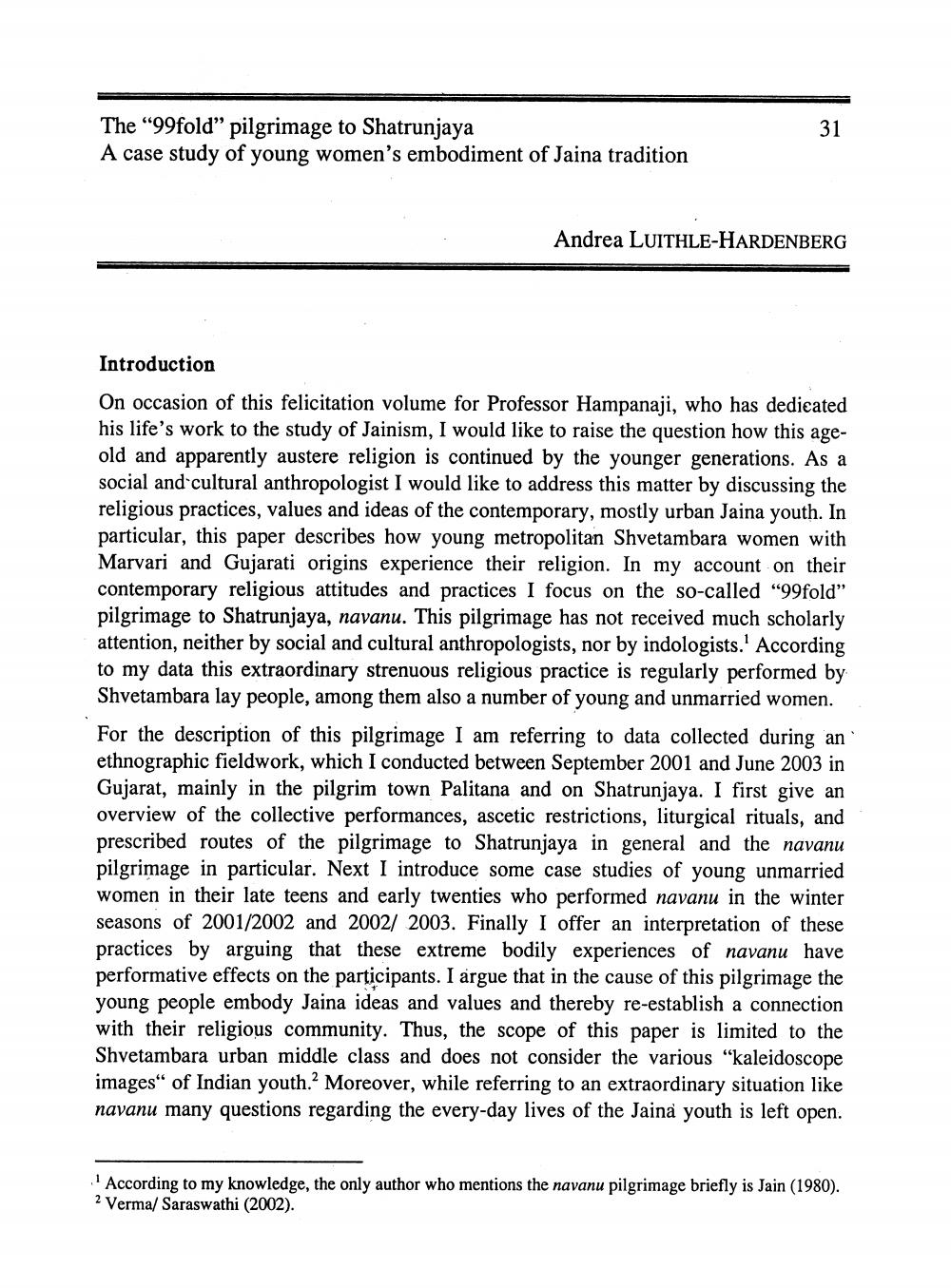________________
31
The “99fold” pilgrimage to Shatrunjaya A case study of young women's embodiment of Jaina tradition
Andrea LUITHLE-HARDENBERG
Introduction On occasion of this felicitation volume for Professor Hampanaji, who has dedicated his life's work to the study of Jainism, I would like to raise the question how this ageold and apparently austere religion is continued by the younger generations. As a social and cultural anthropologist I would like to address this matter by discussing the religious practices, values and ideas of the contemporary, mostly urban Jaina youth. In particular, this paper describes how young metropolitan Shvetambara women with Marvari and Gujarati origins experience their religion. In my account on their contemporary religious attitudes and practices I focus on the so-called "99fold" pilgrimage to Shatrunjaya, navanu. This pilgrimage has not received much scholarly attention, neither by social and cultural anthropologists, nor by indologists.' According to my data this extraordinary strenuous religious practice is regularly performed by Shvetambara lay people, among them also a number of young and unmarried women. For the description of this pilgrimage I am referring to data collected during an ethnographic fieldwork, which I conducted between September 2001 and June 2003 in Gujarat, mainly in the pilgrim town Palitana and on Shatrunjaya. I first give an overview of the collective performances, ascetic restrictions, liturgical rituals, and prescribed routes of the pilgrimage to Shatrunjaya in general and the navanu pilgrimage in particular. Next I introduce some case studies of young unmarried women in their late teens and early twenties who performed navanu in the winter seasons of 2001/2002 and 2002/ 2003. Finally I offer an interpretation of these practices by arguing that these extreme bodily experiences of navanu have performative effects on the participants. I argue that in the cause of this pilgrimage the young people embody Jaina ideas and values and thereby re-establish a connection with their religious community. Thus, the scope of this paper is limited to the Shvetambara urban middle class and does not consider the various "kaleidoscope images" of Indian youth. Moreover, while referring to an extraordinary situation like navanu many questions regarding the every-day lives of the Jaina youth is left open.
According to my knowledge, the only author who mentions the navanu pilgrimage briefly is Jain (1980). 2 Verma/ Saraswathi (2002).




